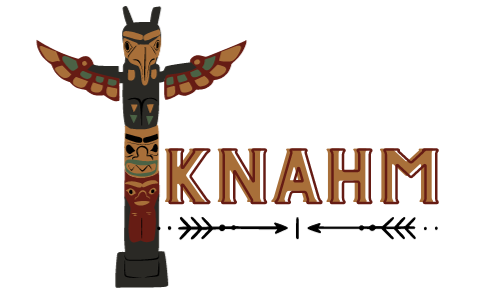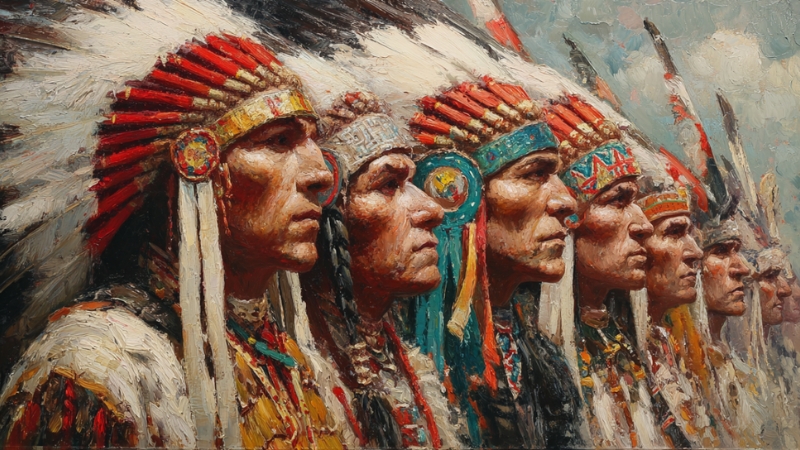The Sioux are one of the most historically influential and culturally significant Indigenous peoples of North America. Known collectively as the Oceti Sakowin or “Seven Council Fires,” the Sioux nation has played a central role in shaping the history of the Great Plains and the American West.
Their story stretches from ancient times, when they lived near the Great Lakes, to the era of forced removals and wars with the United States, and into the present day, where Sioux communities continue to maintain their traditions while navigating modern challenges.
Origins and Early History
The Sioux trace their roots to the woodland regions of present-day Minnesota, Wisconsin, and parts of Canada. Archaeological and oral history evidence suggest that their ancestors lived in the Great Lakes region for centuries before migrating westward.
Early European explorers, including the French in the 17th century, encountered Sioux groups living along the Mississippi River and around Lake Superior.
The name “Sioux” itself comes from a French adaptation of the Ojibwe term Nadouessioux, meaning “little snakes” or “enemy.” However, the Sioux traditionally identify as the Dakota, Lakota, and Nakota, which correspond to different divisions within their nation.
By the late 1600s and early 1700s, conflicts with the Ojibwe, combined with pressure from European settlers and fur trade dynamics, pushed many Sioux groups westward into the Great Plains. This migration marked the beginning of the Sioux transformation from woodland dwellers into iconic horse-mounted buffalo hunters of the Plains.
The Oceti Sakowin: Political and Social Organization
The Sioux nation was not a single tribe but rather a confederation of allied groups, collectively called the Oceti Sakowin (Seven Council Fires). These were organized into three main divisions, based largely on dialect:
Division
Sub-Groups (Tribes)
Dialect
Geographic Range
Dakota (Eastern Sioux)
Mdewakanton, Wahpekute, Wahpeton, Sisseton
Dakota
Minnesota, Wisconsin
Nakota (Middle Sioux)
Yankton, Yanktonai
Nakota
Eastern Dakotas
Lakota (Western Sioux)
Oglala, Sicangu (Brulé), Hunkpapa, Miniconjou, Itazipco (Sans Arc), Oohenunpa (Two Kettle), Sihasapa (Blackfeet Sioux)
Lakota
Great Plains: Dakotas, Montana, Nebraska, Wyoming
The Council Fires represented a loose confederation where each band maintained autonomy but cooperated for defense, trade, and major ceremonial gatherings. Leadership was often based on consensus, with chiefs chosen for qualities of wisdom, generosity, and bravery rather than strict hereditary succession.
Migration to the Great Plains
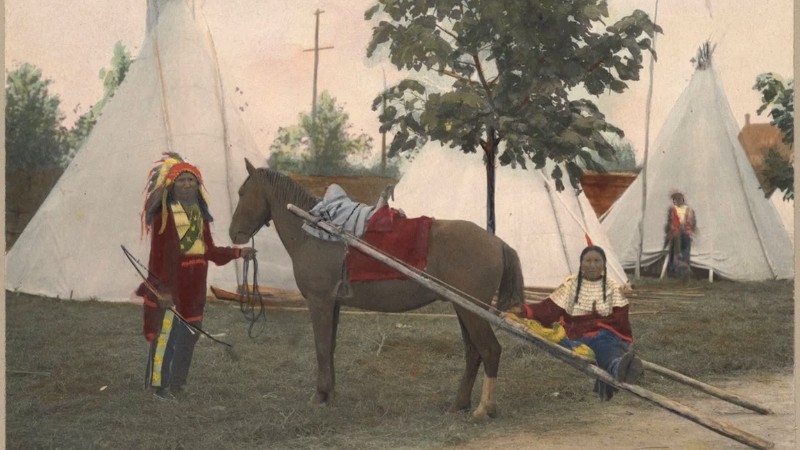
The Sioux’s movement into the Plains coincided with two transformative developments: the introduction of horses and the expansion of the fur trade.
Horses, acquired from Spanish colonists through trade and raiding by the 18th century, revolutionized Sioux life. They allowed for greater mobility, expanded hunting ranges, and more effective warfare.
The buffalo became the cornerstone of Plains Sioux society. Herds provided food, clothing, shelter, and tools.
Tipis made from buffalo hides offered portable housing suited for nomadic life. This shift to a Plains economy created a powerful warrior culture that would dominate the northern Plains for more than a century.
Contact with Europeans and Americans
The Sioux first encountered Europeans through French fur traders and missionaries. By the 19th century, they were increasingly drawn into relations with American settlers, traders, and the U.S. government.
Key developments included:
- Trade: The Sioux became central players in the fur trade, exchanging buffalo hides for guns, metal tools, and cloth.
- Conflict: As U.S. settlements expanded westward, conflicts over land and resources intensified.
- Treaties: The Sioux signed multiple treaties with the United States, often under duress, ceding large portions of their homelands in exchange for annuities and promised protections that were frequently broken.
Wars with the United States
The Sioux are perhaps most famous in American history for their military resistance to U.S. expansion. Several major conflicts defined their 19th-century experience:
The Dakota War of 1862
View this post on Instagram
In Minnesota, Dakota Sioux frustrations with corrupt agents, broken treaties, and starvation erupted into armed conflict. The Dakota War of 1862 resulted in hundreds of settler deaths and brutal reprisals from the U.S. government.
Thirty-eight Dakota men were executed in Mankato, Minnesota – the largest mass execution in U.S. history.
The Red Cloud’s War (1866–1868)
Further west, the Lakota under leaders like Red Cloud fought to protect their hunting grounds in Wyoming’s Powder River country.
This war ended with the Treaty of Fort Laramie (1868), in which the U.S. recognized the Great Sioux Reservation, covering large parts of South Dakota, including the sacred Black Hills.
The Great Sioux War (1876–1877)
The discovery of gold in the Black Hills led to U.S. violations of the Fort Laramie Treaty. Lakota leaders such as Sitting Bull and Crazy Horse resisted, culminating in the Battle of the Little Bighorn (1876), where Sioux and Cheyenne warriors defeated George Armstrong Custer’s 7th Cavalry.
Despite this victory, the Sioux ultimately faced overwhelming U.S. military force, and by 1877, most bands had surrendered.
Wounded Knee Massacre (1890)
The Wounded Knee Massacre made sensational news at the time, but getting to the heart of the matter took a much deeper view of American history. https://t.co/J7MwVOVW9X
— Smithsonian Magazine (@SmithsonianMag) December 29, 2024
The U.S. Army killed more than 250 Lakota men, women, and children at Wounded Knee Creek in South Dakota. This massacre marked the tragic end of large-scale armed resistance and symbolized the violent suppression of Sioux independence.
Reservation Era and Assimilation Policies
Following their defeat, the Sioux were confined to reservations. The U.S. government pursued assimilation policies designed to dismantle their traditional way of life:
- Land Allotment: The Dawes Act (1887) divided communal Sioux lands into individual plots, with “surplus” land sold to settlers. This resulted in massive land loss.
- Boarding Schools: Sioux children were forced into boarding schools where they were prohibited from speaking their language or practicing their traditions.
- Suppression of Religion: Ceremonies such as the Sun Dance were banned, though many Sioux continued them in secret.
These policies caused cultural dislocation, poverty, and intergenerational trauma. Yet, Sioux communities resisted and preserved their traditions, often adapting them to survive under hostile conditions.
Culture and Traditions
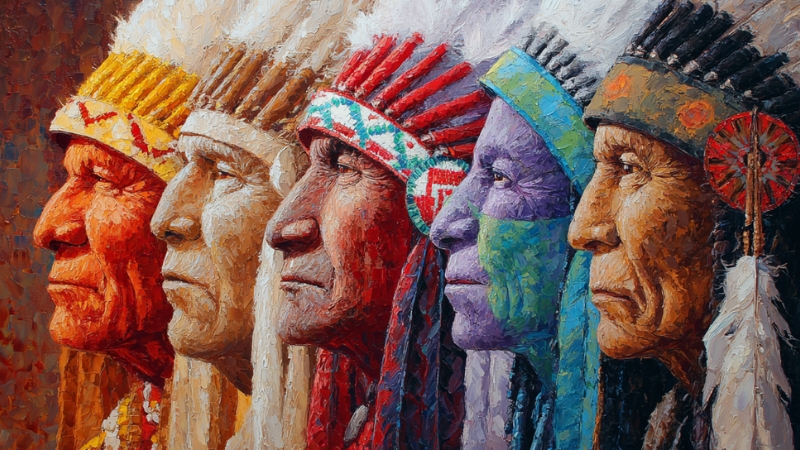
Language
The Sioux languages – Dakota, Nakota, and Lakota – belong to the Siouan language family. Today, revitalization efforts are underway, with immersion schools and digital tools supporting language preservation.
Spirituality
Sioux spirituality centers on Wakan Tanka, the Great Spirit or Great Mystery, and emphasizes the interconnectedness of all life. Ceremonies such as the Sun Dance, Vision Quest, and Sweat Lodge remain integral to cultural identity.
Social Structure
Kinship is central to Sioux society. Extended families formed the foundation of community life, with obligations of reciprocity, generosity, and respect for elders.
Arts and Material Culture
Sioux people are renowned for their beadwork, quillwork, hide painting, and tipi construction. Traditional clothing, especially war bonnets and dresses adorned with beadwork, carries deep symbolic meaning.
The Buffalo
No element was more important than the buffalo. Every part of the animal was used – meat for food, hides for clothing and shelter, bones for tools, sinew for thread.
The near-extinction of the buffalo in the late 19th century, caused by U.S. hunting policies, was a deliberate attempt to break Sioux resistance.
The Sioux in the 20th Century
Despite immense challenges, Sioux communities survived and found new ways to assert sovereignty.
- Legal Battles: Sioux tribes fought lengthy court cases for recognition of treaty rights, particularly over the Black Hills. In 1980, the U.S. Supreme Court ruled that the seizure of the Black Hills was illegal, awarding compensation that Sioux tribes refused, insisting on the return of the land instead.
- Activism: The 20th century saw Sioux involvement in the American Indian Movement (AIM), including the 1973 standoff at Wounded Knee, which drew global attention to Indigenous rights.
- Cultural Revitalization: Powwows, language programs, and traditional ceremonies saw revival, strengthening identity across generations.
The Sioux Today
@thecuriouscontinent Discover 20 fascinating facts about the Sioux Tribe, one of the most iconic Native American cultures! From their rich history and traditions to their significant contributions to American society, this video dives deep into the lives of the Sioux. Learn about their legendary warriors, unique social structures, and the sacred significance of their connection to nature. Join us as we explore their vibrant culture and the resilience of the Sioux people through captivating visuals and engaging storytelling. Don’t forget to like and share this video with friends who want to learn more about Native American heritage! #SiouxTribe #NativeAmericanFacts #CulturalHeritage #IndigenousHistory #exploreculture #history #geography #trivia ♬ original sound – thecuriouscontinent
Today, Sioux people live on reservations across North Dakota, South Dakota, Nebraska, Minnesota, and Montana, as well as in urban centers. Major reservations include Pine Ridge, Rosebud, Standing Rock, and Cheyenne River.
Challenges persist, including poverty, unemployment, and health disparities. For example, Pine Ridge Reservation has one of the lowest life expectancies in the United States. Yet, alongside these struggles, there is remarkable resilience:
Sioux Contributions to American History and Culture
The Sioux legacy extends far beyond their own communities. Their resistance to U.S. expansion shaped American history, and their leaders – Sitting Bull, Crazy Horse, Red Cloud – remain iconic figures worldwide.
Sioux traditions have also influenced broader American culture, from the symbolism of the tipi and eagle feather to the popularity of powwows and Native art.
Contribution
Historical Significance
Military Resistance
Battles such as the Little Bighorn shaped U.S. military history
Cultural Symbols
Tipis, beadwork, and war bonnets became global icons of Native America
Political Influence
Sioux activism helped drive Indigenous rights movements in the U.S.
Environmental Advocacy
Standing Rock protests linked Indigenous sovereignty to climate justice
Conclusion
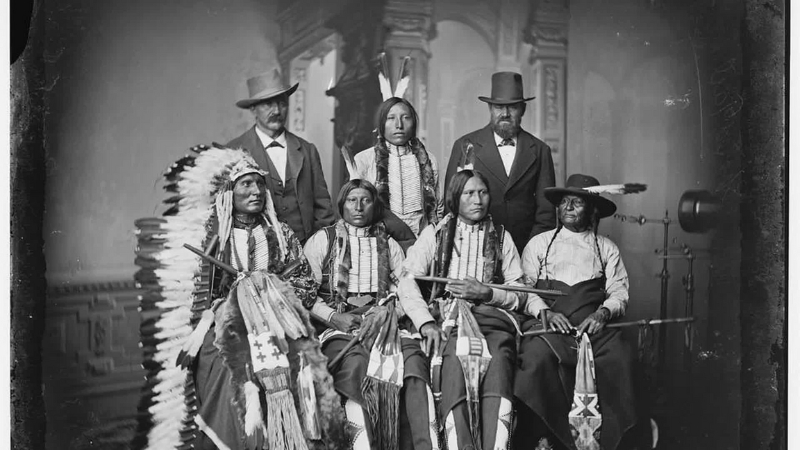
The story of the Sioux people is one of adaptation, survival, and cultural resilience. From their early days near the Great Lakes to their rise as dominant buffalo hunters of the Plains, through wars with the United States and the devastating reservation era, the Sioux have endured profound upheaval.
Yet their traditions, spirituality, and identity remain strong. Native American tribes in Kentucky, such as the Shawnee and Cherokee, also carried forward traditions that shaped their identity and ties to the land.
Today, Sioux communities continue to face challenges but also embody resilience and renewal. Their history is not only central to the Indigenous experience but also to the story of America itself.
To understand the Sioux is to recognize the enduring strength of a people who, despite centuries of dispossession, remain committed to preserving their culture and asserting their sovereignty for future generations.
